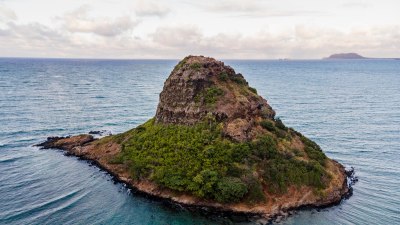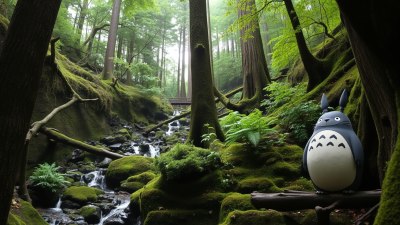Exploring Patagonia Despite Its Harsh and Unpredictable Climate
Discover the beauty and challenges of exploring Patagonia's diverse landscapes and climate extremes.

Patagonia, a vast region encompassing southern Chile and Argentina, is renowned for its stunning landscapes, diverse ecosystems, and the juxtaposition of breathtaking natural beauty with a challenging climate. This unique area, much more than just a geographical location, captivates adventurers and nature lovers with its rugged mountains, sprawling glaciers, and dramatic coastlines. However, to truly appreciate Patagonia, one must also understand its harsh and unpredictable climate, which can significantly impact the experience of exploration.
One of the most notable features of Patagonia is its varied geography, which includes everything from arid steppes to lush temperate rainforests. These differences in terrain contribute to the wide range of climatic conditions across the region. While some areas may bask in beautiful sunshine, others may be engulfed by fog or battered by relentless winds. The climate is notorious for changing rapidly—sunshine can quickly turn into rain or even snow, sometimes within the span of mere minutes. This unpredictability necessitates careful planning and provides both challenges and rewards for travelers.
Understanding the Climate
The climate in Patagonia is primarily influenced by the movement of air masses from the Pacific Ocean. The western edge of Patagonia receives abundant rainfall due to moist winds that hit the Andes mountains, creating dense forests and lush vegetation. In contrast, the eastern side, located in the rain shadow of the mountains, is much drier, characterized by arid steppe and semi-desert conditions. This stark contrast creates a range of microclimates within a relatively small area, offering visitors a unique opportunity to experience multiple ecosystems in one trip.
Temperatures in Patagonia vary widely depending on the season and the specific location. In general, summer months (December to February) tend to be milder, with temperatures averaging between 60°F to 75°F (15°C to 24°C). However, even in summer, it’s not uncommon to encounter cold spells or sudden weather changes. Winter months (June to August) are much colder, particularly in the mountainous regions where temperatures can drop below freezing. While the southern hemisphere summer is the most popular time for visitors, those prepared for the unpredictable weather can find astonishing beauty and solitude even in the winter months.
Preparing for an Adventure
Due to the unpredictable climate, thorough preparation is crucial for anyone wishing to explore Patagonia. An essential first step is to check the weather forecast regularly before and during your trip. However, it is equally important not to solely rely on forecasts, as conditions can change drastically at a moment's notice. Travelers should pack versatile clothing that includes layers, allowing them to adapt to shifting temperatures and weather conditions throughout the day.
In addition to flexible clothing, packing the right gear is essential for navigating Patagonia’s varied terrain. Depending on your chosen activities—be it hiking, biking, or kayaking—ensure you have the appropriate equipment. Sturdy hiking boots, water-resistant jackets, and thermal layers will help keep you comfortable. Navigation tools such as maps, GPS devices, and local guides can also be invaluable, especially in remote areas where trails may not be well-marked.
Destinations Worth Visiting
There are countless locations in Patagonia that showcase its breathtaking landscapes and diverse climates. Torres del Paine National Park, located in Chilean Patagonia, is perhaps the most famous destination. This stunning park features iconic granite peaks, glacial lakes, and an extensive range of flora and fauna. Visitors can find well-maintained trails that cater to various levels of experience. The park’s entrance fees help maintain the trails and preserve the natural environment, making it an essential stop for any traveler.
Further south lies the Los Glaciares National Park in Argentina, known for its magnificent glaciers, including the famous Perito Moreno Glacier. Here, you'll have the opportunity to witness the stunning phenomenon of glaciers calving into turquoise lakes, creating spectacular displays of nature’s power. The weather in this area can be particularly volatile, with sporadic rain and wind; however, the reward is an unforgettable experience of awe-inspiring glacial landscapes.
Embracing the Elements
Those who venture into Patagonia must learn to embrace the elements. The powerful winds that sweep through the landscape can create challenges for even the most seasoned adventurers. Instead of allowing the weather to deter your enthusiasm, consider it an integral part of the experience. The winds sculpt the land, shape the ecosystems, and create a sense of wildness that is both exhilarating and humbling.
It's essential to maintain a positive mindset and an adaptable spirit when exploring these untamed regions. Take your time to appreciate nature's beauty, regardless of the weather conditions. A rainy day can lead to stunning waterfalls and vibrant landscapes, while a sunny moment may reveal a breathtaking vista that was hidden moments earlier. Each experience offers a unique perspective on Patagonia’s rugged charm.
Experiencing the Flora and Fauna
Despite the climate's harshness, Patagonia is rich in biodiversity. The region is home to unique species of plants and animals adapted to thrive in the challenging environment. From the vast steppe, dotted with guanacos and rheas, to the dense forests harboring endangered species like the Andean condor and the elusive puma, Patagonia is a paradise for wildlife enthusiasts.
Explorers may also encounter distinct plant species, including the iconic lenga and coihue trees that form dense forests, alongside colorful wildflowers that add vibrancy to the landscape during the warmer months. Birdwatching is exceptional in this region, with opportunities to spot both migratory and native species. Being respectful of these ecosystems is vital as they are delicate and, in many cases, endangered.
Local Culture and Community
In addition to its stunning nature, Patagonia boasts a rich cultural heritage. The region is home to several indigenous communities, including the Mapuche and Tehuelche, who have lived in harmony with the land for centuries. Their traditions, crafts, and stories are an integral part of Patagonia’s identity. Visitors can gain a deeper understanding of this culture by engaging with local communities and learning about their relationship with the environment.
Moreover, the warmth of local hospitality is a significant aspect of the Patagonian experience. Many small towns and villages welcome travelers, offering cozy accommodations and hearty meals made from locally sourced ingredients. Embrace the opportunity to share a meal and learn about the region’s history, enhancing your journey and fostering a genuine connection with the land and its people.
Environmental Considerations
As more travelers flock to Patagonia to experience its wonders, environmental conservation has become an increasingly critical issue. The region faces threats from climate change, over-tourism, and resource exploitation. Visitors should prioritize sustainable practices to minimize their impact on the environment. This includes sticking to established trails, respecting wildlife, and properly disposing of waste.
Contributing to local conservation efforts can also enhance your visit. Many parks and organizations offer volunteering opportunities or donate programs that protect the area’s delicate ecosystems. By being a responsible traveler, you can help ensure that future generations will have the chance to enjoy the pristine beauty of Patagonia.
Exploring Patagonia offers an exhilarating journey through some of the most stunning natural landscapes on Earth. While the region's unpredictable climate presents challenges, it also allows travelers to engage with Patagonia's wild essence. With careful planning, an adventurous spirit, and respect for the environment, anyone can experience the unique beauty and culture that this remarkable region has to offer. Whether you choose to hike along the pristine lakes, marvel at ancient glaciers, or immerse yourself in local traditions, Patagonia promises an adventure unlike any other. Embrace the challenges, celebrate the beauty, and create lasting memories in this extraordinary part of the world.











